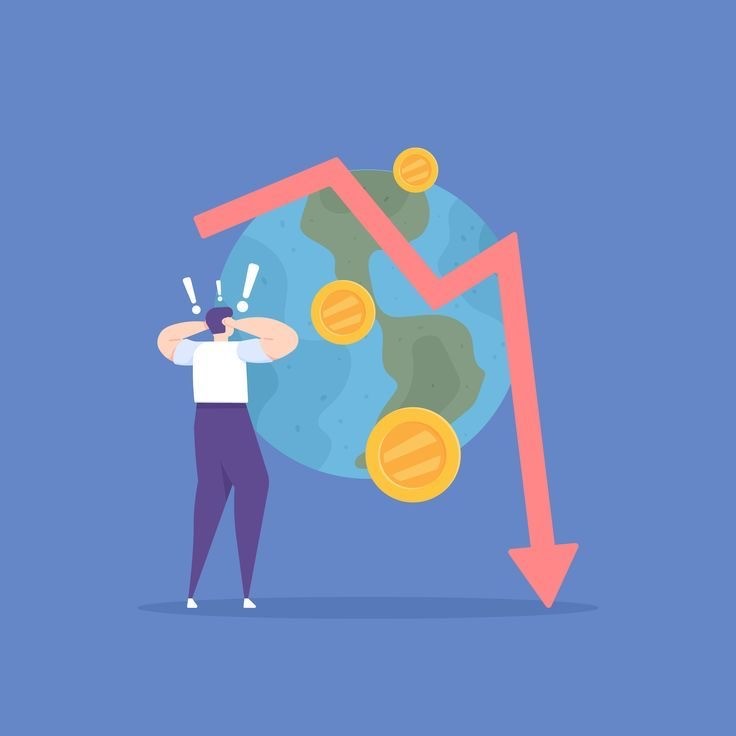The inevitable rise in the overall price level of goods and services over time is represented by inflation, a persistently fascinating economic phenomenon. While a moderate level of inflation stands as a testament to the vitality of a growing economy, its repercussions on individual purchasing power are profound and far-reaching. Purchasing power, that elusive metric, delineates the quantity of commodities and services an individual can obtain with a fixed sum of currency. As inflation obscures the real value of money, its relentless march leaves behind a complex web of effects on consumers and the entire macroeconomic landscape.
One of the most obvious effects of inflation is the loss of real income, which results directly from the rising costs of basic goods. The same financial amount buys a smaller range of goods as the cost of basic necessities and services skyrockets. Maintaining one’s standard of living becomes an increasingly daunting task in the absence of corresponding economic growth. This situation takes on particular significance for people with fixed income sources, especially pensioners, whose financial stability hangs in the balance.
Inflation significantly impacts the paradigms that govern individual saving and investment choices. Individuals embark on a quest to protect their money from the insidious erosion of their savings’ purchasing power when faced with its relentless decline. Some turn to investments, navigating the perilous terrain of stocks, real estate, or precious metals—traditional safeguards against the corrosive effects of inflation. Simultaneously, others may opt to abandon the thrifty mindset in favor of spending, as the allure of holding cash diminishes in the enigmatic embrace of inflation’s unstoppable march.

The threat of high or erratic inflation casts a shadow of concern over the economic landscape. As prices surge at an alarming pace, firms grapple with the complexity of long-term planning, resulting in reduced investment efforts and a more cautious approach to hiring. The inevitable consequence is economic insecurity, accompanied by a sluggish growth rate. Central banks, the cornerstones of monetary policy, frequently strive to maintain inflation within a predefined target range to uphold the equilibrium that underpins economic stability.
The confounding influence of inflation bestows varying advantages upon borrowers and lenders. Those who have secured loans with fixed interest rates benefit from the subtle alchemy of inflation, as they embark on their repayment journey with a currency of diminished real value. Lenders, on the other hand, witness repayments that have diminished in real terms, an undesirable outcome of this fiscal shift. To mitigate the inherent risks, lenders may impose a premium in the form of higher interest rates, particularly when the threat of inflation looms large, in order to shield themselves from the relentless erosion of currency value.
Governments, as custodians of economic stability, may find themselves compelled to deploy an array of policies to quell the storm of soaring inflation. Measures such as raising interest rates or judiciously trimming government expenditure become the tools of choice. These interventions, akin to stones thrown into a pond, create ripples that resonate throughout the economic landscape. Elevated interest rates, for instance, impose a sluggish pace on economic growth and make obtaining credit more burdensome for both individuals and businesses.

Retirement planning is significantly impacted by inflation, the silent guardian of time. The prudent individual must recognize that the cost of living is destined to increase during their golden years. Neglecting to incorporate this undeniable reality into one’s financial plan raises the ominous specter of premature resource depletion or a diminished standard of living during retirement.
Employers and labor unions engage in more frequent discussions when inflation becomes widespread because workers, as protectors of their purchasing power, routinely negotiate for higher wages. To counterbalance the rise in prices and maintain the stability of compensation, contracts, often linked to the fluctuations of the Consumer Price Index (CPI), may include provisions for cost-of-living adjustments.
Inflation emerges as a formidable force, its tendrils delving deep into the realm of purchasing power, leaving an indelible mark on individuals, businesses, and the broader tapestry of the economy. As prices soar, consumers are confronted with the daunting prospect of a diminishing ability to acquire the same array of goods and services, leading to transformative shifts in saving and spending habits. It is incumbent upon individuals to adopt a discerning perspective that takes into account the inexorable influence of inflation when navigating the intricate maze of financial choices. Similarly, policymakers are tasked with the meticulous management of inflation to maintain the delicate balance of economic stability; they bear the weighty responsibility of responsible stewardship. A crucial guide for navigating the complex terrain of personal finance and the intricate choreography of economic planning lies in a profound understanding of the intricate dance between inflation and purchasing power.
Sources
- https://www.investopedia.com/articles/insights/122016/9-common-effects-inflation.asp#:~:text=on%20the%20economy.-,1
- https://www.imf.org/en/Publications/fandd/issues/Series/Back-to-Basics/Inflation#:~:text=In%20an%20inflationary%20environment%2C%20unevenly,payers%20of%20fixed%20interest%20rates.
- https://smallbusiness.chron.com/inflation-effect-purchasing-power-money-696.html
- https://online.wpunj.edu/degrees/business/mba/general/impact-inflation-on-purchasing-power/




